Wooster’s Water – The South Wellfield
Guest bloggers: Luke Woodfill and Francis Nwokonko (HYDRO25)
On 9/22/25, Dr. Wiles’ Hydrology class (plus our wonderful ESCI technician Nick Wiesenberg) had the opportunity to tour the Wooster, Ohio Water Treatment Plant. On the way there, we stopped to see weather monitoring station at the Secrest Arboretum at OSU CFAES (Figure 1).
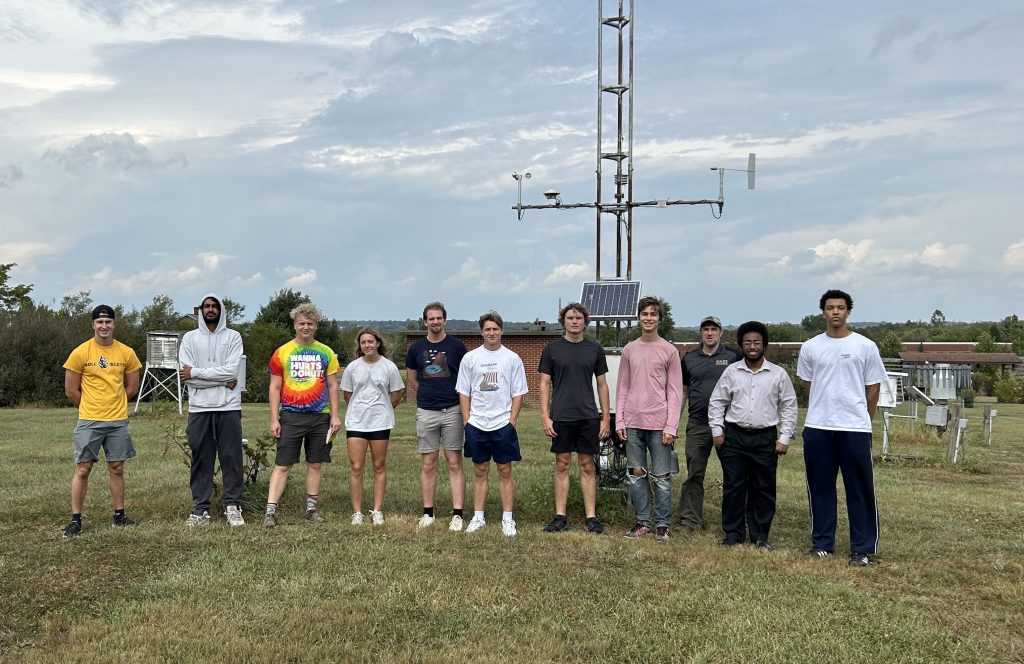
Figure 1. The HYDRO25 class at the OSU CFAES weather monitoring station.
This weather monitoring station constantly measures temperature, wind speed and direction, precipitation, and solar radiation. OSU has been collecting data at this location since the 1860s, and this weather data is publicly available through the CFAES website. As hydrologists, weather data and where it comes from is very important to us, so we took the opportunity to visit a station in our very own backyard – and of course get a group picture. Then, we hurried off to our main stop: the Wooster Water Treatment Plant.
Upon arriving at the facility, we were met at the door by our tour guide Derek Sigler, a lab technician at the treatment plant. Our class was taken on a roughly 1-hour tour of the facility and got very detailed explanations of all the different machines on site and their functions.
The water used in the City of Wooster comes from a glacial aquifer. Under the area is an ancient riverbed which now holds our groundwater. The Wooster aquifer can pump up to 36 million gallons a day. Currently, the plant pumps around 3-5 million gallons a day. They used to pump much more, but more water-efficient technologies like dishwashers and laundry machines have reduced the water demand. This decrease is also a result of repairs to leaky lines.
Mr. Sigler shared many different water treatment processes, but at the very end, we were shown two containers of water (Figure 2). The lab technician said, if we couldn’t retain anything from the hour-long tour, we should at least take home the following message. The water on the left is the water being pumped out of the ground, and the water on the right is the clean, treated water being distributed to the residents of Wooster.
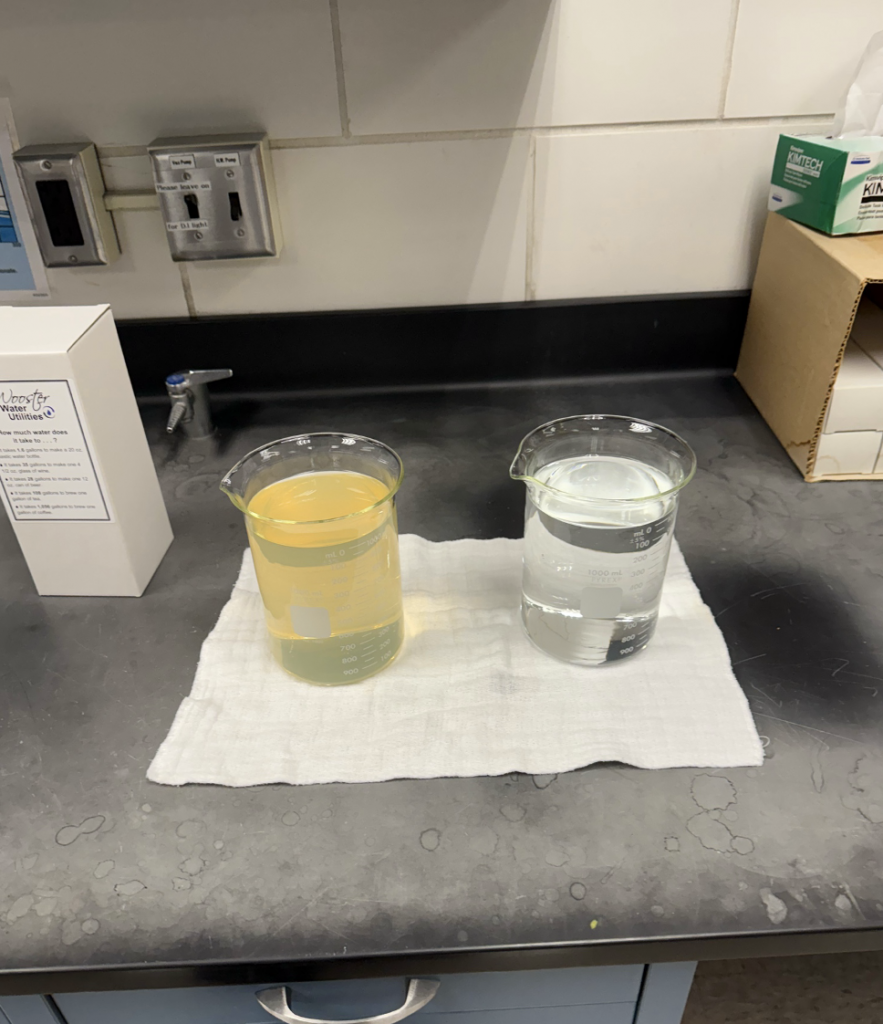
Figure 2. A comparison of untreated water pumped out of the ground (left) and water that has been treated at the plant and is distributed to Wooster residents (right).
To treat the water, the plant uses the lime-soda ash softening method (Figure 3). Lime removes the hardness from carbonates, and the soda ash removes the non-carbonate hardness. The lime-soda ash removes the hardness by precipitating the calcium carbonates out of the water.
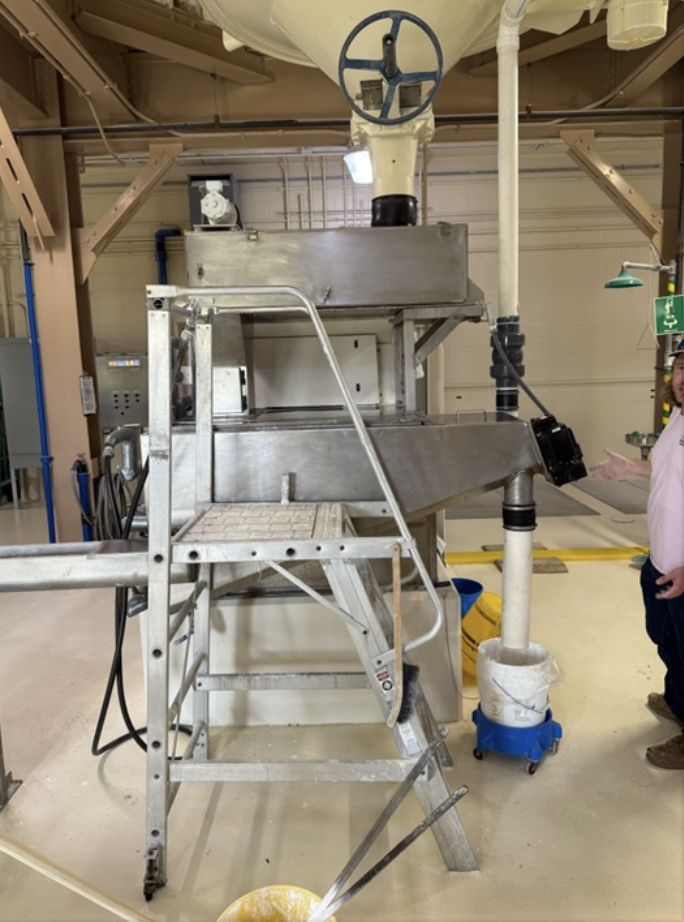
Figure 3. This machine adds the lime and soda ash to the water to precipitate out carbonates.
These solids will settle on the bottom of the storage tanks (Figure 4). This process of adding 99.6% soda ash, helps control the pH of our water which protects the pipes from corrosion.
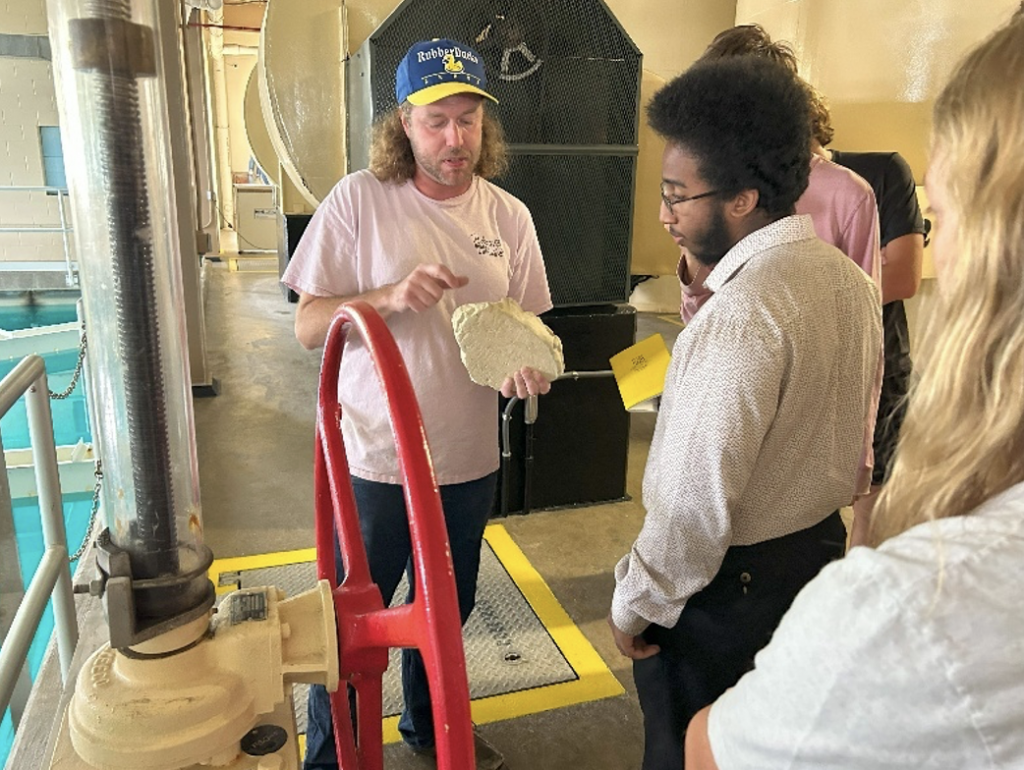
Figure 4. Derek Sigler showing us a block of calcium that built up when the tank wasn’t cleaned for a long time.
The water comes into the facility at around a pH of 7.5. Lime is added to raise the pH to about 11.5 before it is dropped back down to a pH of 8.5 (the pH that the water is distributed to the public). This process removes iron, manganese, and other solids in the water. The water moves through the plant and continues to be treated.
 Figure 5. One of three tanks that hold chemical solutions that are added to the water to purify it; this tank holds sodium hypochlorite.
Figure 5. One of three tanks that hold chemical solutions that are added to the water to purify it; this tank holds sodium hypochlorite.
There were about 3 tanks similar to the one shown in Figure 5, that all held different chemical solutions that were put in small quantities into the water to further purify the water. The tank shown in Figure 5 holds a sodium hypochlorite solution.
Mr. Sigler shared that, currently, the biggest challenges the Wooster water treatment plant is facing include PFAS (aka “forever chemicals”) and VOCs (volatile organic compounds) in the groundwater. These contaminants are frequently tested for and monitored in the water. The EPA regulates the concentrations that are allowed to be in the water. The Wooster plant has had to pump from different locations due to plumes in the area. The well located behind the plant (Figure 6) is no longer being used due to VOC plumes.
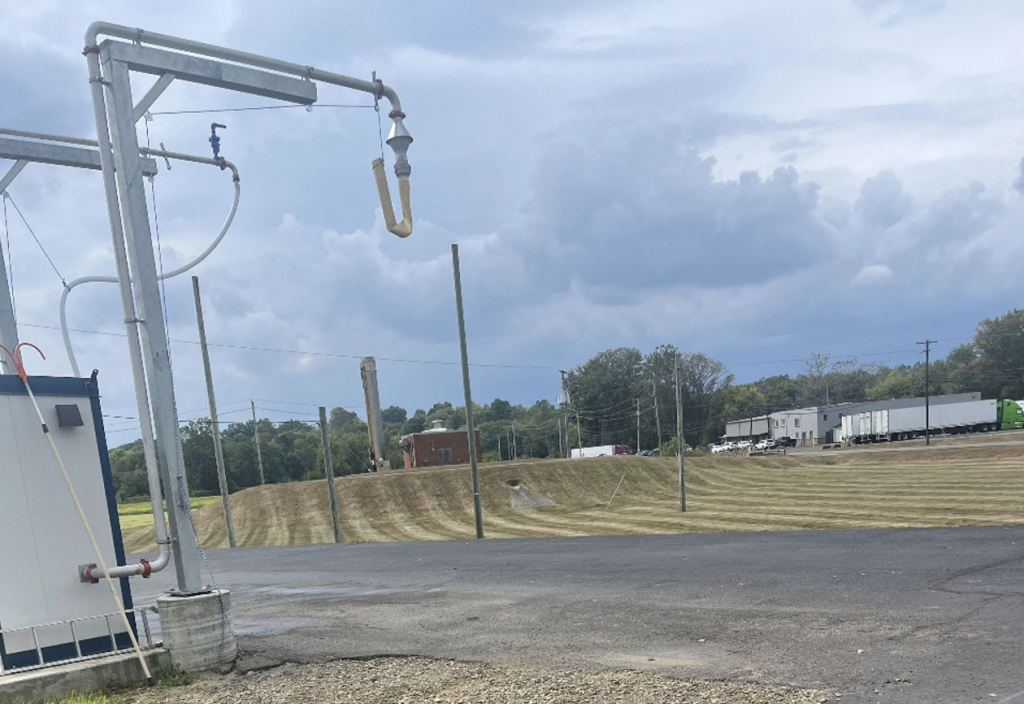
Figure 6. The well in red brick structure in this image used to pump water into the Wooster Water Treatment Plant, but it is no longer used due to a VOC plume.
Mr. Sigler noted that contaminants like PFAS and VOCs are challenging for water treatment facilities, but it presents an opportunity for chemists and hydrologists to work towards a solution. Our tour of the Wooster Water Treatment Plant reminds us of the importance of hydrology in the real world. While PFAS and VOCs pose a challenge to water treatment facilities, they also provide a future for aspiring hydrologists or chemists. Perhaps a Wooster HYDRO25 student will be the one to figure out how to effectively remove these contaminants from our water supply.
On behalf of the College of Wooster’s 2025 Hydrology class, thank you to Derek Sigler and the Wooster Water Treatment Plant for opening your facility to us and giving us a great tour. Thank you, Dr. Wiles for a great opportunity to see how hydrology affects our everyday lives.
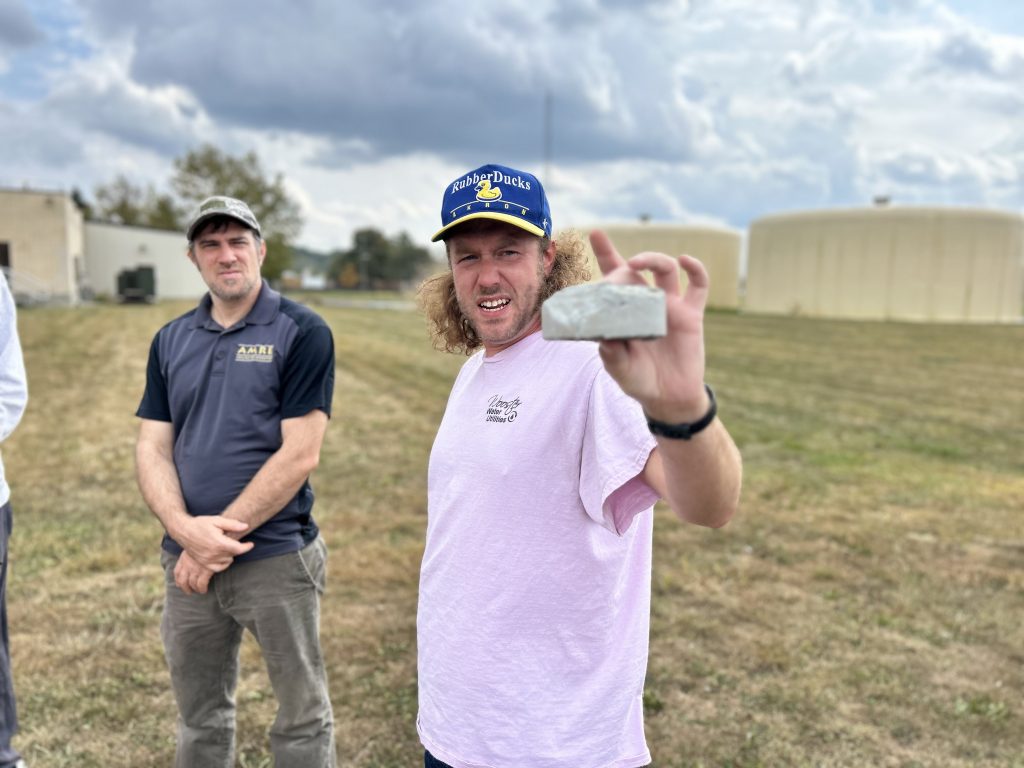
Source: https://woostergeologists.scotblogs.wooster.edu/2025/09/30/woosters-water-the-south-wellfield/
Anyone can join.
Anyone can contribute.
Anyone can become informed about their world.
"United We Stand" Click Here To Create Your Personal Citizen Journalist Account Today, Be Sure To Invite Your Friends.
Before It’s News® is a community of individuals who report on what’s going on around them, from all around the world. Anyone can join. Anyone can contribute. Anyone can become informed about their world. "United We Stand" Click Here To Create Your Personal Citizen Journalist Account Today, Be Sure To Invite Your Friends.
LION'S MANE PRODUCT
Try Our Lion’s Mane WHOLE MIND Nootropic Blend 60 Capsules
Mushrooms are having a moment. One fabulous fungus in particular, lion’s mane, may help improve memory, depression and anxiety symptoms. They are also an excellent source of nutrients that show promise as a therapy for dementia, and other neurodegenerative diseases. If you’re living with anxiety or depression, you may be curious about all the therapy options out there — including the natural ones.Our Lion’s Mane WHOLE MIND Nootropic Blend has been formulated to utilize the potency of Lion’s mane but also include the benefits of four other Highly Beneficial Mushrooms. Synergistically, they work together to Build your health through improving cognitive function and immunity regardless of your age. Our Nootropic not only improves your Cognitive Function and Activates your Immune System, but it benefits growth of Essential Gut Flora, further enhancing your Vitality.
Our Formula includes: Lion’s Mane Mushrooms which Increase Brain Power through nerve growth, lessen anxiety, reduce depression, and improve concentration. Its an excellent adaptogen, promotes sleep and improves immunity. Shiitake Mushrooms which Fight cancer cells and infectious disease, boost the immune system, promotes brain function, and serves as a source of B vitamins. Maitake Mushrooms which regulate blood sugar levels of diabetics, reduce hypertension and boosts the immune system. Reishi Mushrooms which Fight inflammation, liver disease, fatigue, tumor growth and cancer. They Improve skin disorders and soothes digestive problems, stomach ulcers and leaky gut syndrome. Chaga Mushrooms which have anti-aging effects, boost immune function, improve stamina and athletic performance, even act as a natural aphrodisiac, fighting diabetes and improving liver function. Try Our Lion’s Mane WHOLE MIND Nootropic Blend 60 Capsules Today. Be 100% Satisfied or Receive a Full Money Back Guarantee. Order Yours Today by Following This Link.






